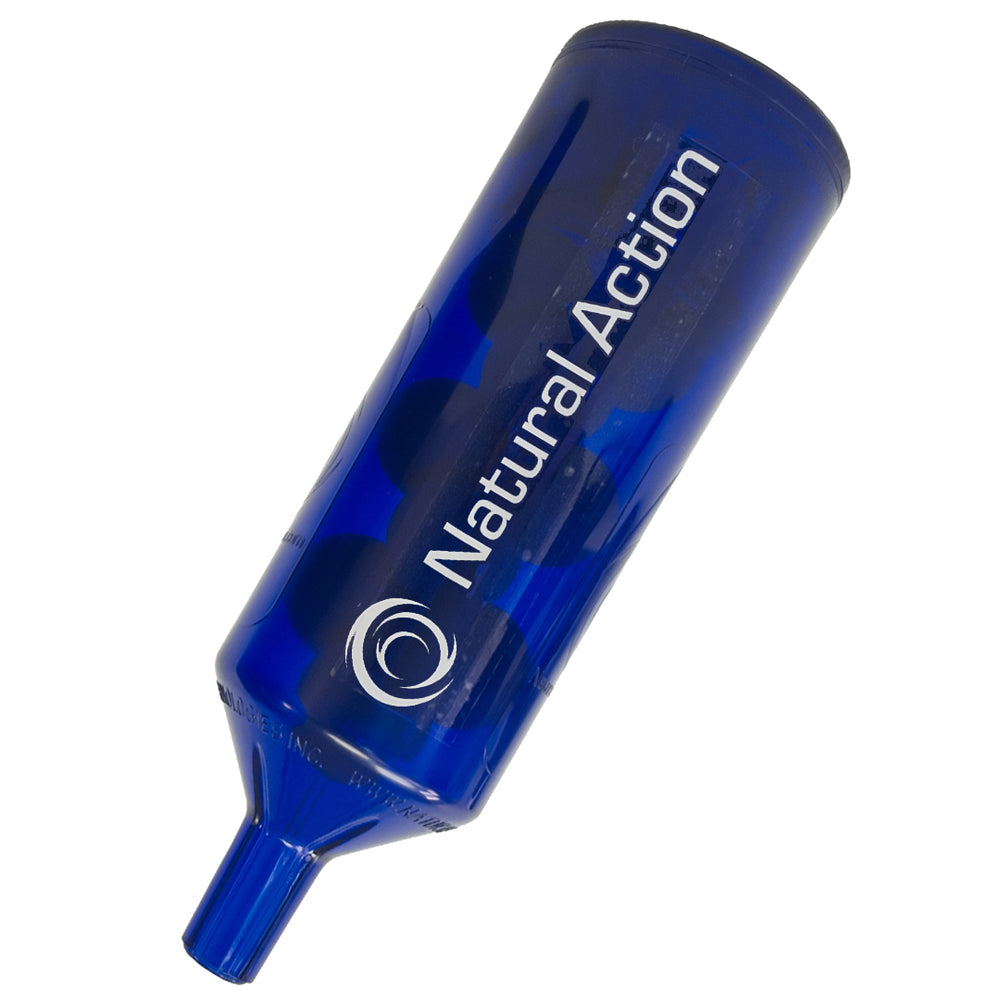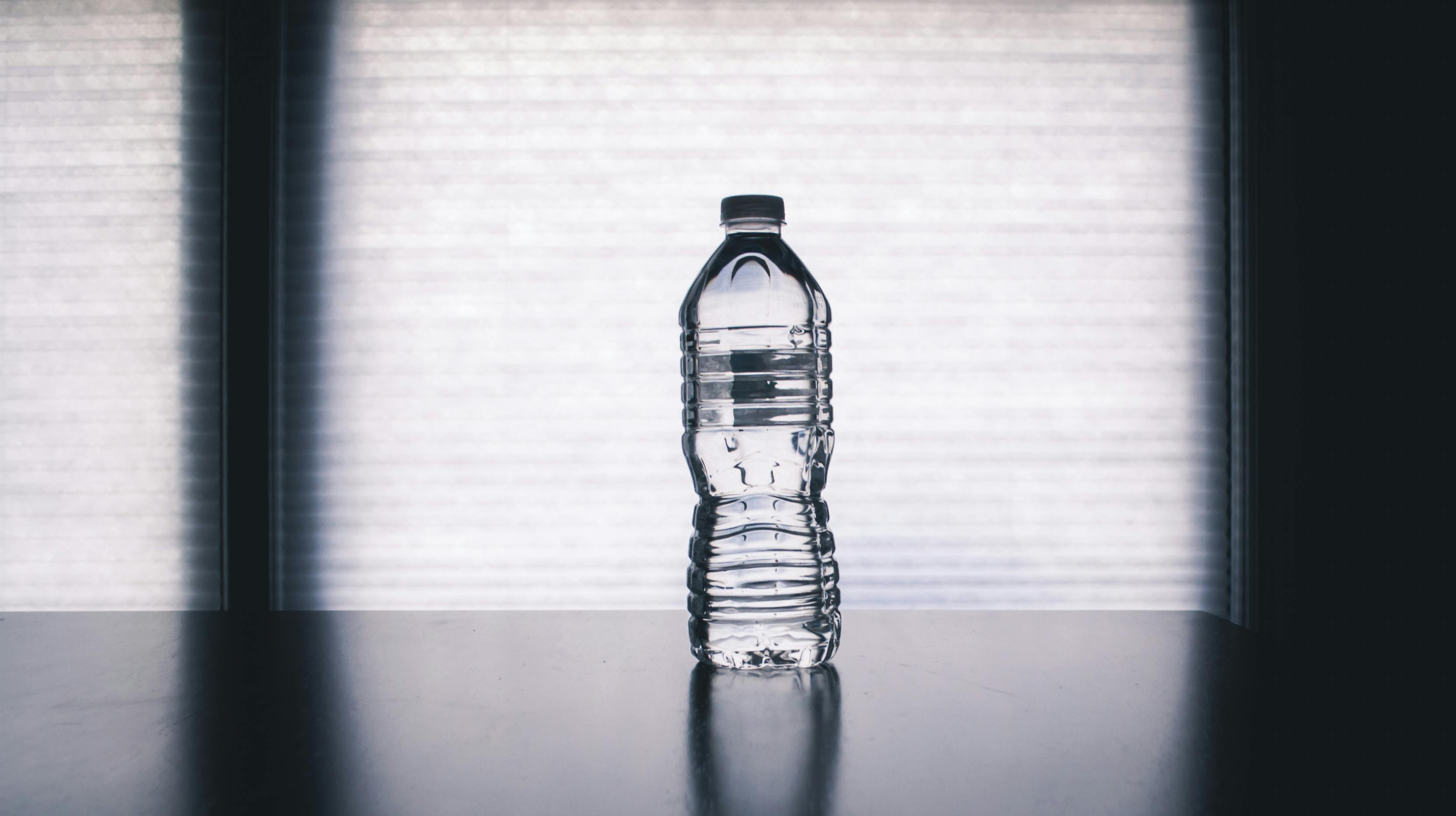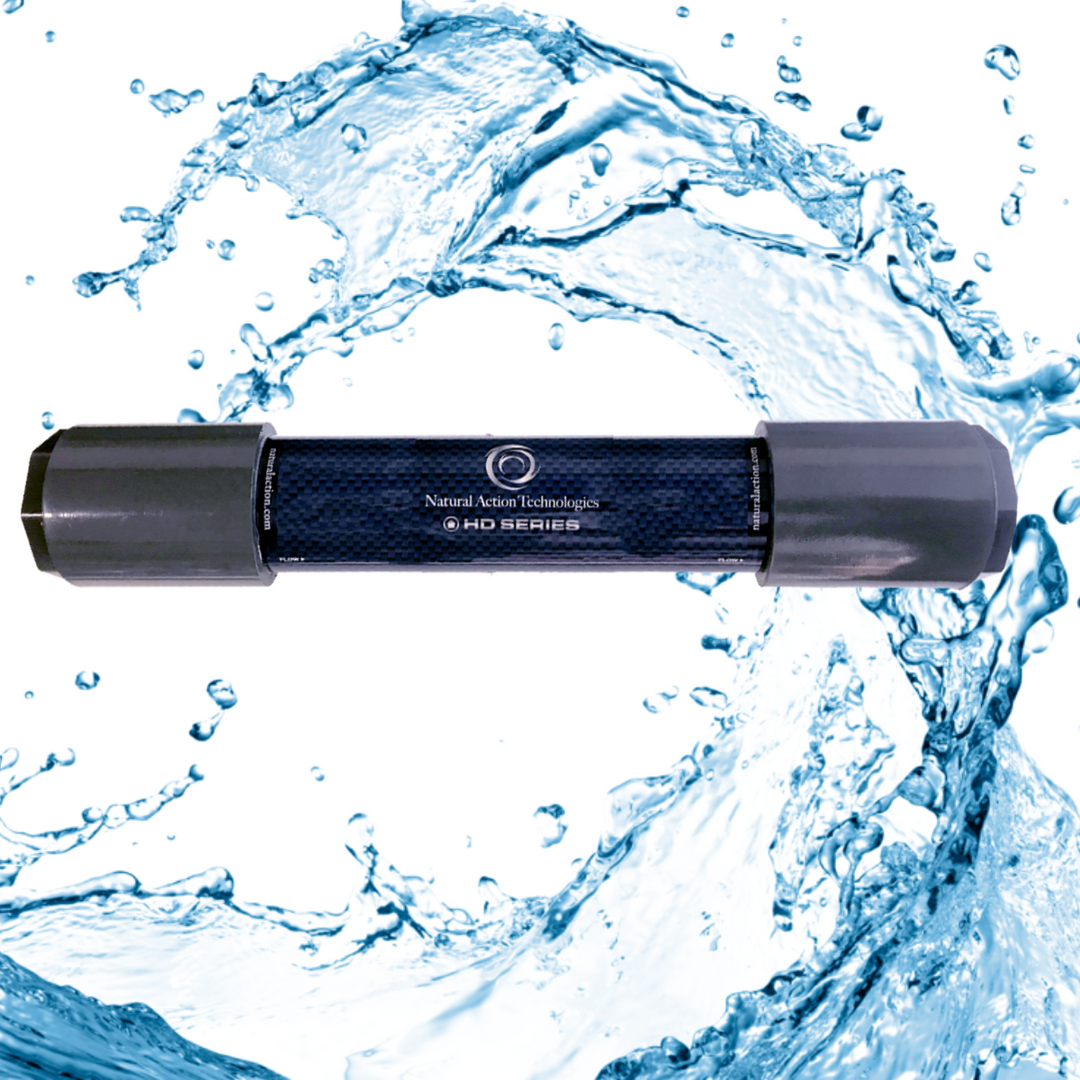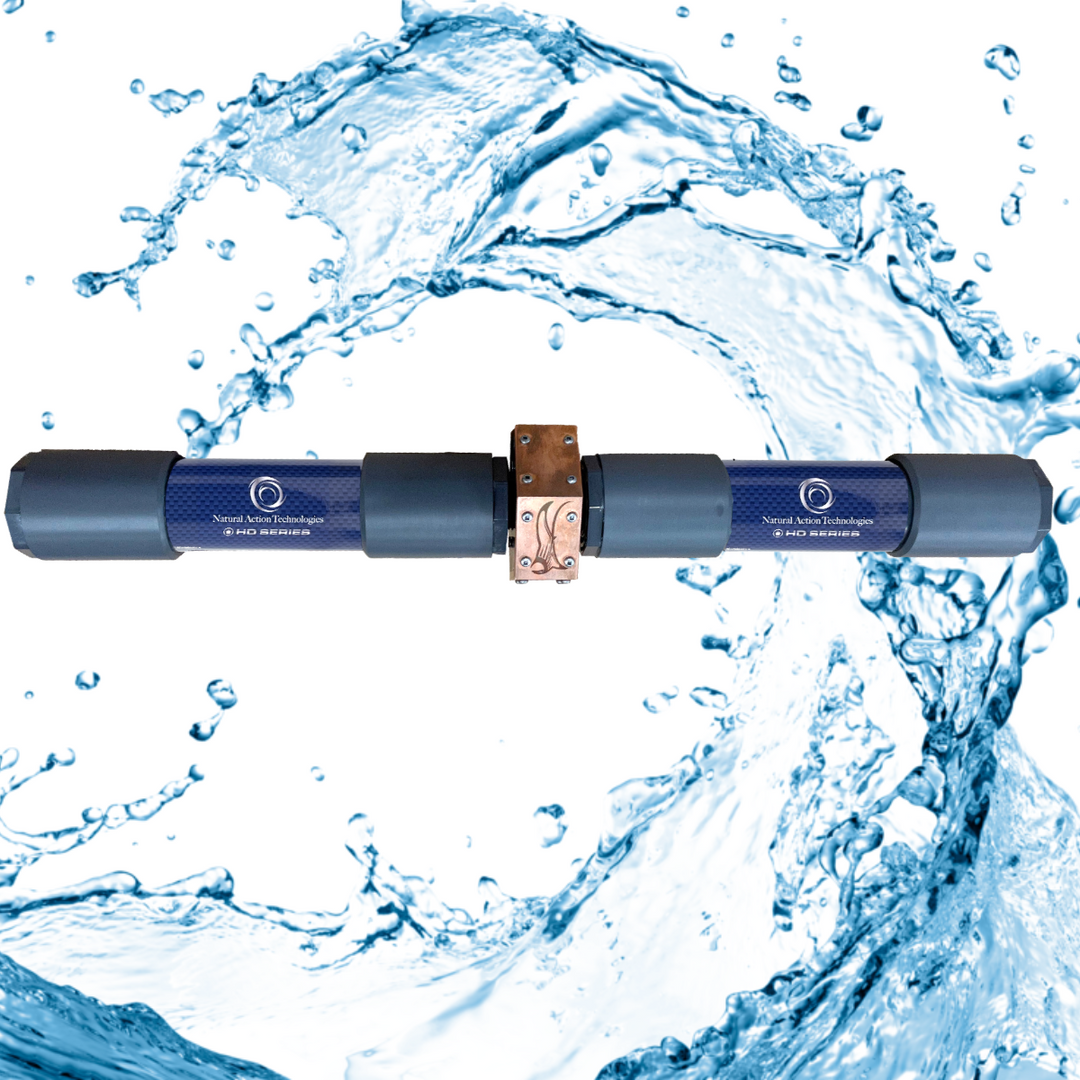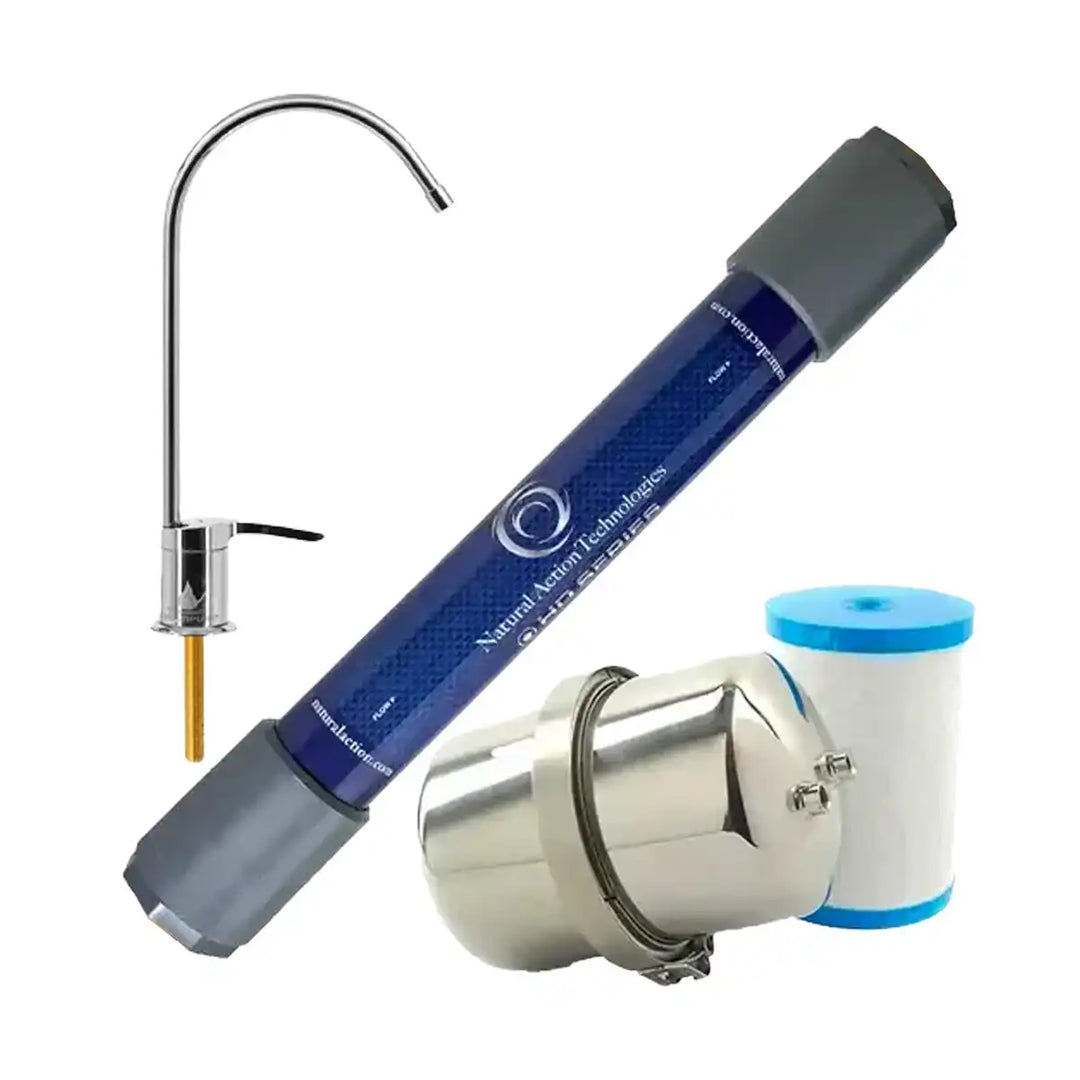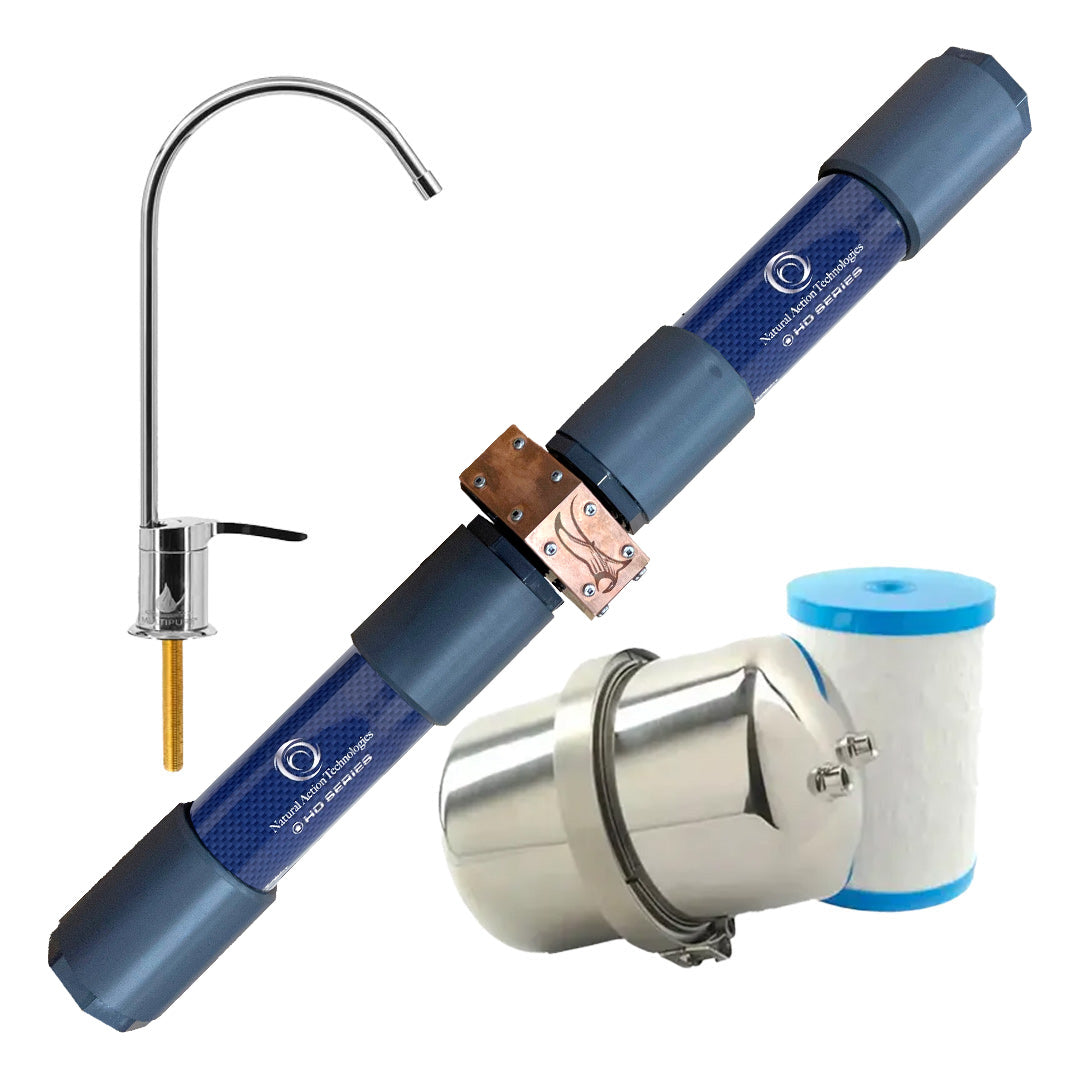Now we'll be discussing bottled water. And let's start with the obvious, plastic. I'm sure a lot of us are already aware of the dangers of plastic, so I don't want to beleaguer the topic. But I do just want to say that water is a solvent. It dissolves things into it. So of course it's going to do the same with plastic.
Plastic is a xenoestrogen, aka a compound that artificially mimics endogenous estrogen within our bodies, massively disrupting the endocrine system. And your endocrine system is sensitive in parts per billion. It's sensitive to the most minute shifts in the atmosphere. But the amount of plastic in water is much larger than parts per billion. In fact, one team of researchers found that people who drink only bottled water might swallow 90,000 particles of microplastics in their water each year.
And humanity is adapting to this in some really interesting ways. Now, we don't want plastic to disrupt the delicate balance of hormones in your endocrine system because those hormones are what pattern our emotional perception of reality. We experience the world through the lens of our hormonal balances or imbalances, and they color our feelings and our sensory experiences. An endocrine system compromised by microplastics leads us to perceive the world in skewed ways and to feel off balance.
Quiz time. What happens when you soak a tea bag in water? You make tea, obviously, right? What happens when you soak plastic in water? You make plastic tea. And what would happen if you had a teacup the size of the planet and you wanted to make tea?
You would probably need a teabag about twice the size of Texas. Well, there's an island of plastic floating in the Pacific Ocean that's about twice the size of Texas. It's known as the Plastic Island or the Great Pacific Plastic Patch. Sounds like a lovely tropical vacation spot, doesn't it? We know that plastic is not biodegradable, meaning that life and soil don't decompose it. That's why it's such an eco-hazard. But what does break plastic down? Light, heat, and water. It's photodegradable. If we leave a water bottle in the backseat of your car in the sun or on a shelf for too long, that plastic will start breaking down into the water. It will start the slow process of decomposition. And even if you were to somehow keep your plastic bottles away from the light, never mind the light that they were exposed to during storage and shipping,
A lot of companies are doing what's called a hot fill. Fiji and several other companies, for example, are blatantly disregarding common standard practice for plastic production. So usually when you pour plastic, it goes into a mold hot, and then you let it sit in a warehouse for anywhere from a few months to a few years in order to finish off-gassing, depending on what kind of plastic it is. But what a lot of these companies are doing to save time and money is they'll pour it into the plastic bottle, and then they'll pour the water right into it immediately while it's still hot, so there's no time for the plastic to off-gas. It just off-gases into the water. And the industry term for this, again, is a hot fill, and it's clearly disgusting.
In one bottle of Nestle Pure Life, for example, concentrations were found to be as high as 10,000 plastic pieces per liter of water. And not just plastic fibers, but actual plastic fragments. Of the 259 bottles tested, only 17 were free of plastics, according to one study. and several other bottled water brands have been found to contain arsenic and even E. coli at dangerous levels. In some cases, the FDA were aware of the contamination and continued to allow the water to be distributed without recall despite inspectors' warnings. Nowadays, due to the high volume of plastic in the world, we're seeing massive worldwide sexual and endocrine disruption. Male frogs are turning into female frogs in the wild. Sperm counts are the lowest they've ever been, ever.
Testosterone levels in men are extremely low across the board. Plastics have been indicated in tons of different endocrine cancers, especially female cancers like cervical, fibroid, and ovarian cancers. And it would be nice to just switch everything over to BPA-free plastic, but unfortunately BPA-free plastic still actually has more EAs or estrogenic agents than plastic with BPA, so it's not that simple. And it's really not as simple as just recycling either, because even recycling keeps the plastic in the environment and in the atmosphere. We need to just bypass and sidestep it entirely and just get away from the plastic paradigm. And a lot of times that can be as simple as just exercising our right as consumers to vote with our dollars. For a lot of these companies like Nestle and Pepsi and Coca-Cola, it's actually cheaper for them to use glass bottles rather than plastic, and they're already doing that in many poor and developing countries.
But the reason that you see plastic in the US instead of glass is just because of consumer demand, even though it's more expensive for them. If we can shift the consumer demand, then the paradigm might shift. If you have to buy bottled water at a store, opt for an artesian water, like in a glass bottle, like Mountain Valley Springs, for example. And then you can use a simple portable device, like the portable water revitalizer, to structure it. And we'll talk about that more in the video where we delve into water alchemy tools and strategies. Now, there are obviously several kinds of bottled water that you'll see on the shelf. You might see purified water, which is just reverse osmosis or distilled water.
And again, we'll cover that more in another section. Or you'll see alkaline water in bottles, and we'll cover that in another module. But suffice it to say for now that bottled water, the whole bottled water industry, is only held to the same standards as tap water by the FDA. In other words, a company only has to demonstrate that their water is as safe as tap water, for which the regulations are already super low. So all of the purified and alkaline bottled water products options are actually just filtered tap water. Another thing you'll see on the shelf is bottled spring water, but just know that 99 times out of 100 this is not actually spring water, it's actually artesian well water. The industry lobbied to have the laws changed about what constitutes a spring so now they can drill a borehole down into an aquifer and pump up water and then label it spring water and typically where they do this they end up lowering the water table robbing the locals of the water that they have the natural rights to, and then selling it back to those people in plastic bottles.
There's a really good book written about this called Blue Gold that was made into a documentary, which I highly recommend. It's an amazing film. But we're not going to go into water rights and privatization today. That's a whole other e-course on its own. Let's just remember one very important thing about the bottled water industry. Bottled water companies don't produce water. They produce plastic. That's it. The water itself is mostly stolen. They come into a water-rich community and drain the aquifer dry, basically stealing life from the local watershed and then pumping poisons back into that environment with extremely detrimental effects to the local community.
But another interesting aspect of this to consider is that bottled spring water comes from all over the world. You can get spring water from Fiji, from Maine, from Evian, France, from the Alps. You can get water from all over the world. And we are the first generation in history, in the history of our ancestors, to be made out of water that's not from the place where we are. We're making ourselves from ingredients from the four corners of the world. But imagine how much more grounded and centered and connected we might feel if our body water came from the place where we live.
Let's take an overview so essentially we pay exorbitant amounts, more than the price of gasoline, for water that's been shipped from across the world.
When there are wells in our own communities that are just as good or better and free, not to mention spring. Then they take this water and they put it through reverse osmosis, submicron filtration systems, and then they do either one of two things to it. They either treat it with ozone, which oxidizes and kills off any bacteria which might be in there, or they treat it with UV light, which scrambles the DNA of any organisms that might be in there so that they can't reproduce. Either way, it pasteurizes and sterilizes the water. It kills everything off so that it's dead, so that it can sit on a shelf for years and years without changing. And then they label it fresh mountain spring water in a plastic bottle.
Go figure. Now that I understand the true nature of water as a living, moving, breathing being, whenever I walk down the bottled water aisle at a grocery store, I can't help but see the bottles as rows and rows of little gravestones. Because the water in those bottles is dormant. It's basically dead. It has no vivacity left to it. When water is kept stagnant, it loses its electrostatic charge forces, it loses its dipolar magnetism, it loses its coherent structure. And when we drink that water, it creates stagnation of qi in the body. What we do to our water, we do to ourselves.
I'll see you in the next video where we dive into reverse osmosis and distilled water. And until then, have a beautiful day and stay hydrated.
Enjoy the Video Below!




